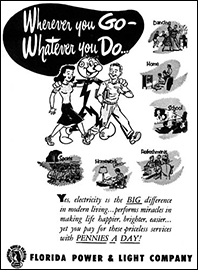Managing keeps things on an even keel. People must be led.
The year: 1989. Florida Power & Light had just won the Deming Prize, Japan’s national quality award, and became the first overseas company to do so. There were a lot of high-flown speeches in the aftermath and deservingly so. But for me, what stuck were the words of CEO Charles Turner.
“The biggest obstacle to improving productivity is management’s inability to recognize that it must lead the company out of its productivity problems—not manage it out,” said Turner. “There is a great deal of difference. Leading means setting the vision, inspiring others by example, and following up to see that the vision is met.”
 Click here for larger image. |
Do not confuse managing with leading. Yes, they need each other, but they are not the same thing. They each have a central role to play, but sequence matters. Begin with managing, and you will find it hard to introduce the leader mindset. Begin with leadership, and managing can, will, and must align with it, and become a powerful support.
…

Comments
Leadership wins...
More great insights from Dr. Galsworth.
I have had the opportunity to make manufacturing my career for over 30 years (mostly in management). During that time I have met very few true "Leaders". I have been around many good managers that could "get things done" with or without the participation of the people. But the damage these managers left to the culture in their wake was significant.
In my 30 years I have worked at 6 companies but only one company that is still thriving. The one that is still thriving is due to excpetional leadership. In my current role as a management consultant I work with small manufacturing organizations and the understanding of leadership is critical to their survival.
I would be interested in what single trait, characteristic or action Dr Gaslworth considers the most critical in a potential new leader? What is the one thing that a small manufacturer leader can do to be a leader instead of a manager?
Quality Digest keep up the great articles.
Which single trait
I'm by no means representing Dr Galsworth but would find that true leadership starts with 2 very important traits.
The ability to Listen
The ability to empahthize
I would be interested to hear her thoughts on this as well. Thank you for the article & reminder as a fellow leader.
Leading and managing
Fine, leadership and managing depend on each other is true because if left to leader one can get narrow down to somewhere, at last human is a selfish with various temperments.
Add new comment